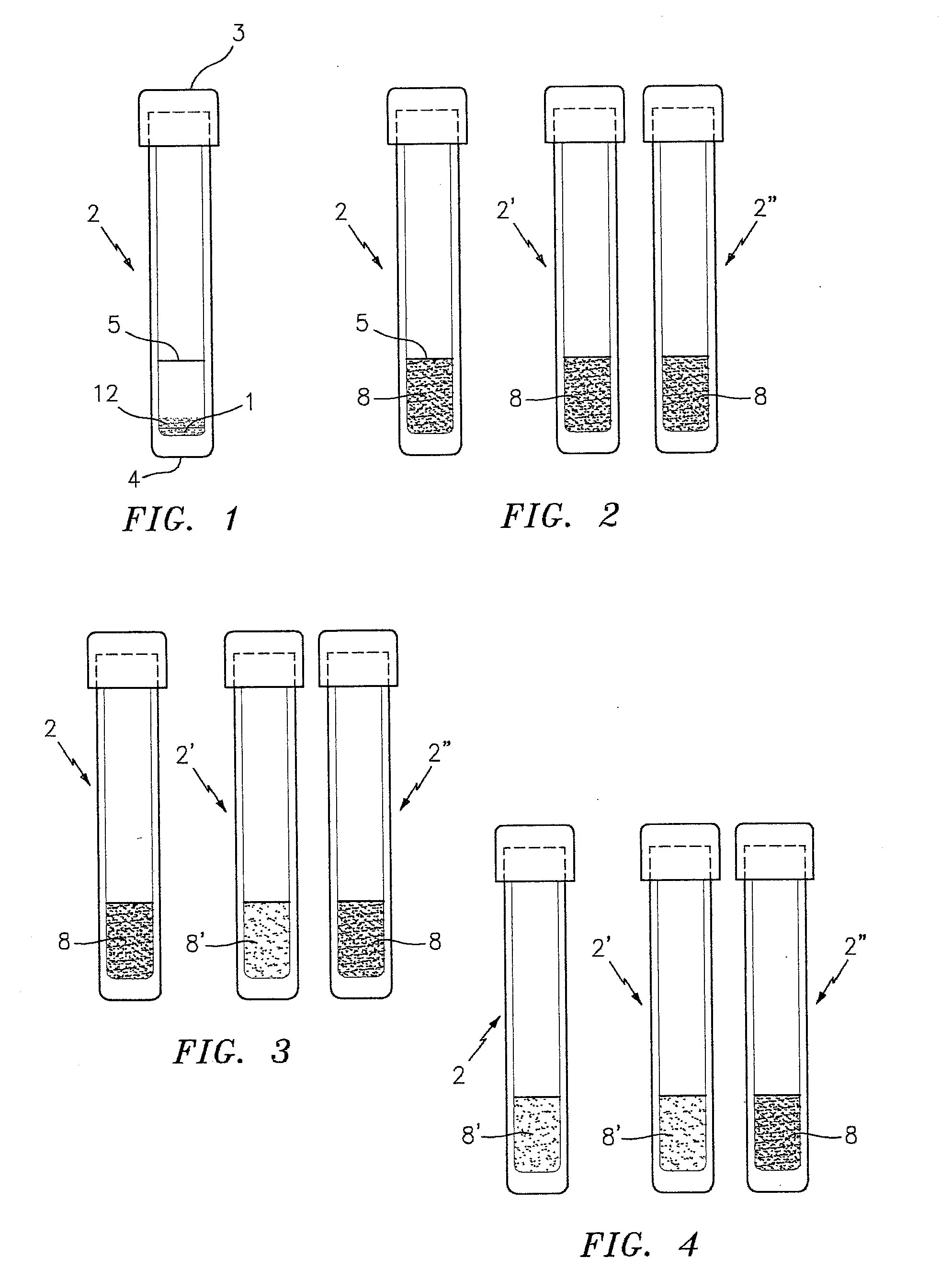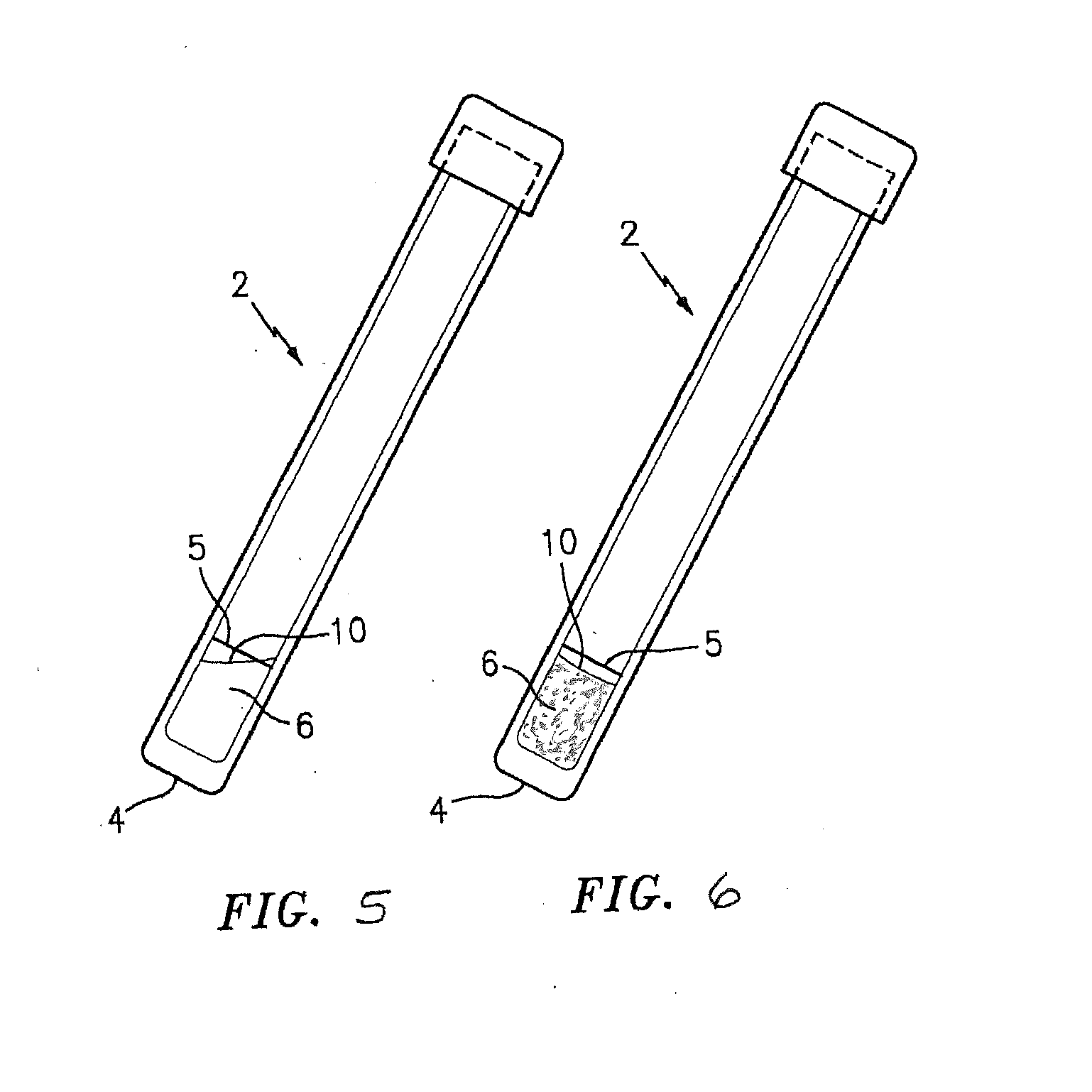Method and medium for detecting the presence or absence of an antibiotic resistant pathogenic staphylococci in a test sample
a staphylococci and test sample technology, applied in the field of methods and testing media, can solve the problems of food poisoning, food poisoning source, serious infection, etc., and achieve the effect of increasing the specificity of the targeted bacteria, increasing the efficiency of detection signal sensing, and increasing efficiency
- Summary
- Abstract
- Description
- Claims
- Application Information
AI Technical Summary
Benefits of technology
Problems solved by technology
Method used
Image
Examples
Embodiment Construction
[0039]FIG. 1 is a side elevational view of a test tube denoted by the numeral 2 which contains a sample test mixture 12 for use in performing the P. staphylococci presence / absence test of this invention. To simplify this Detailed Description of the present invention, the present invention is described below (unless otherwise noted) as applied to the MRSA strain of P. staphylococci. As indicated above, however, the present invention is not limited to the detection of MRSA and can be used to detect other P. staphylococci.
[0040]The tube 2 preferably has a flat bottom 4 and a top closure 3. The tube 2 contains a dry powdered test mixture 12 which is formed in accordance with an embodiment of this invention for detecting the presence or absence of a targeted antibiotic resistant strain of P. staphylococci (e.g., MRSA) in a sample; e.g., a first generational biological sample. The tube 2 is also provided with a reference line 5 which indicates the amount of hydrating liquid, preferably w...
PUM
| Property | Measurement | Unit |
|---|---|---|
| temperatures | aaaaa | aaaaa |
| temperatures | aaaaa | aaaaa |
| temperatures | aaaaa | aaaaa |
Abstract
Description
Claims
Application Information
 Login to View More
Login to View More - R&D
- Intellectual Property
- Life Sciences
- Materials
- Tech Scout
- Unparalleled Data Quality
- Higher Quality Content
- 60% Fewer Hallucinations
Browse by: Latest US Patents, China's latest patents, Technical Efficacy Thesaurus, Application Domain, Technology Topic, Popular Technical Reports.
© 2025 PatSnap. All rights reserved.Legal|Privacy policy|Modern Slavery Act Transparency Statement|Sitemap|About US| Contact US: help@patsnap.com


